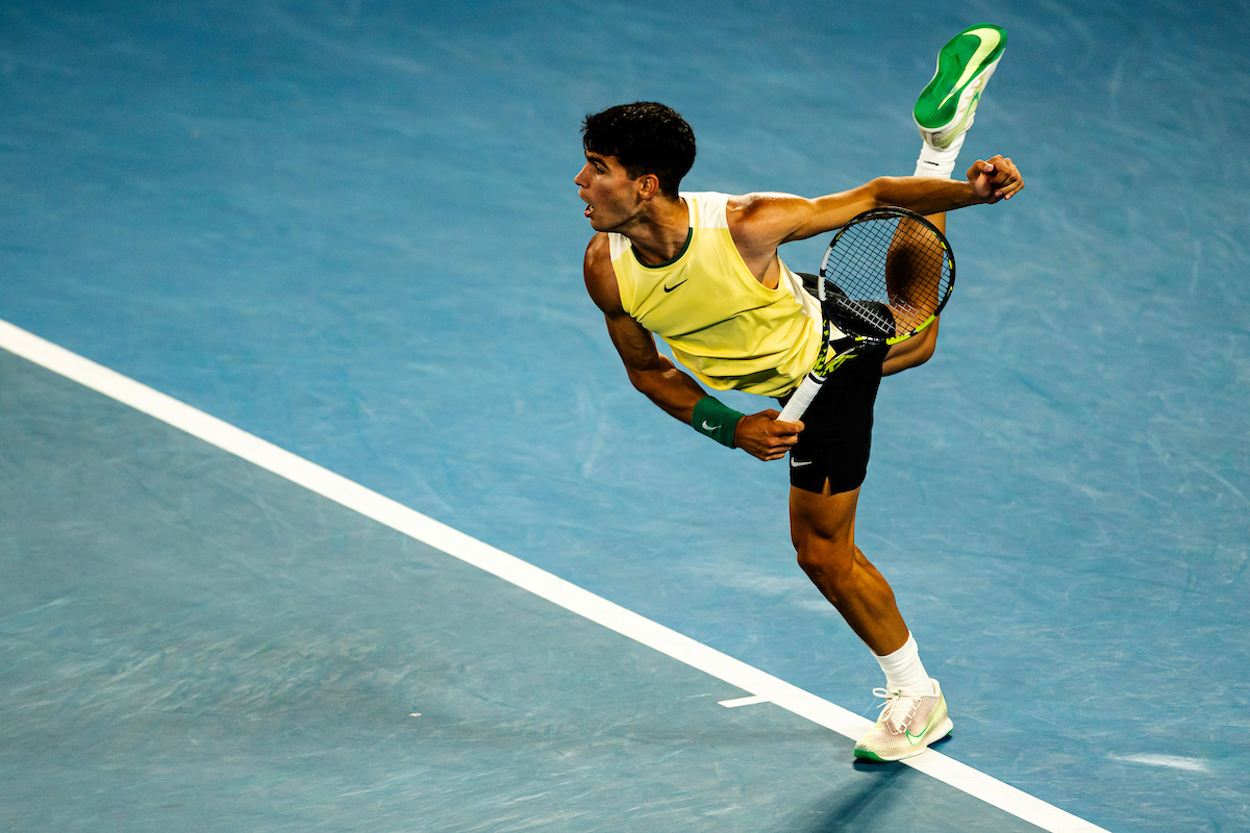
Australian Open top seeds haven’t had it easy reveals strategy expert
The top four seeds in the men’s draw at the 2024 Australian Open all moved through to the second round, but they didn’t have it all their own way.
Let’s look at the key takeaways from their matches and identify what went well and where they struggled.
With the help of Craig O’Shannessy of Brain Game Tennis, Tennishead analyses 4 fascinating encounters for the biggest names in the Australian Open men’s singles draw.
(1) Novak Djokovic def. Dino Prizmic 6-2, 6-7(5), 6-3, 6-4
One of the most challenging tasks in today’s game is to get the upper hand against the world No. 1 from the back of the court. That’s precisely what the 18-year-old Croatian accomplished in their opening round slug fest on Rod Laver Arena.
Djokovic only managed to win 47.9% (70/146) of his baseline points, which was the main reason this match was so tight. Djokovic could only win a lowly 42.2% (38/90) of his baseline points in the second and third sets combined.
Prizmic actually won a higher percentage of his baseline points than Djokovic, at 49.4% (78/158). Prizmic won long rallies of 9+ shots 34-28 and clubbed 15 forehand winners to Djokovic’s 13.
Prizmic is the real deal. His baseline dominance against the world’s premier baseliner was incredibly impressive – a player to watch for the future.
(2) Carlos Alcaraz def. Richard Gasquet 7-6(5), 6-1, 6-2
This match was all about the opening set. Gasquet saved all nine break points he faced, primarily by making eight first serves and keeping the point short. Seven of the nine break points were three shots or less, with the Frenchman forcing four return errors in these crucial moments.
Alcaraz coughed up 38 groundstroke errors in set one, which is why the opening stanza was so close. He only committed 33 total groundstroke errors in the second and third sets combined. Gasquet got within two points of winning the opening set with Alcaraz serving at 5-6, 30-30, but the Spaniard clubbed an ace and then forced a backhand error, and the match quickly unraveled from there.
(3) Daniil Medvedev def. Terence Atmane 5-7, 6-2, 6-4, 1-0 (ret)
This was far from straightforward for the former Australian Open champion, as Medvedev had to endure cramps on his way to a tough victory in sweltering conditions.
Atmane took advantage of Medvedev’s deep return position, especially in the ad court, where the lefty hit his impressive can-opener out wide with great success. The Frenchman kept Medvedev off balance by coming forward to finish points at net (won 20/37) and yanked Medvedev in with deft drop shots.
(4) Jannick Sinner def. Botic Van de Zandschulp 6-4, 7-5, 6-3
Sinner is a “first-strike” machine these days as he elevated his game at the end of 2024 to reach the final of ATP Finals, win the Davis Cup, and ascend to No. 4 in the world. He crushed the Dutchman in short rallies in Melbourne in round one.
Points Won By Rally Length
• 0-4 Shots: Sinner 70/Van de Zandschulp 55 = +15
• 5-8 Shots: Sinner 24/Van de Zandschulp 19 = +5
• 9+ Shots: Sinner 12/Van de Zandschulp 15 = -3
The average rally length was 4.6 shots; the shorter the rally, the better for the Italian. Both players managed 26 winners each from the baseline, but Sinner only yielded 63 errors, while Van de Zandschulp committed 80.
This was an ideal hit-out for Sinner in the opening round as his opponent pushed him just enough, but nothing too stressful.
 For free access to Craig O’Shannessy’s complete courses on ‘25 Golden Rules of Singles‘ and ‘25 Golden Rules of Doubles‘, join thousands of other keen amateur tennis players and become a member of the Tennishead Club. Once you join we’ll immediately send you ground breaking coaching advice, a welcome pack including a full ASICS head to toe outfit including shoes, plus loads more. And it costs as little as £79/$99 to join with membership benefits worth over £600/$700 per year!
For free access to Craig O’Shannessy’s complete courses on ‘25 Golden Rules of Singles‘ and ‘25 Golden Rules of Doubles‘, join thousands of other keen amateur tennis players and become a member of the Tennishead Club. Once you join we’ll immediately send you ground breaking coaching advice, a welcome pack including a full ASICS head to toe outfit including shoes, plus loads more. And it costs as little as £79/$99 to join with membership benefits worth over £600/$700 per year!
Craig O’Shannessy is the creator of Brain Game Tennis. For 20 years he’s been involved in tennis as a coach to players like Kevin Anderson and even Dustin Brown when he famously beat Rafa Nadal at Wimbledon. More recently Craig’s been working as a match analyst at Wimbledon and for the ATP Tour. He has also used the unique insights from his match analysis software dartfish to guide players such as Novak Djokovic with analysis of opponents and performances.
Visit BrainGameTennis.com to read the latest and best selling course ‘Getting Tight’ where Craig teams up with Jeff Greenwald to combine their specific skill sets to help you with the universal problem all players struggle with in matches.
![]() Join >> Receive $700/£600 of tennis gear from the Tennishead CLUB
Join >> Receive $700/£600 of tennis gear from the Tennishead CLUB
![]() Social >> Facebook, Twitter & YouTube
Social >> Facebook, Twitter & YouTube
![]() Read >> World’s best tennis magazine
Read >> World’s best tennis magazine
![]() Shop >> Lowest price tennis gear from our trusted partner
Shop >> Lowest price tennis gear from our trusted partner


